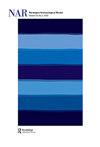边境的农民。泛欧视角下的新锂化
IF 0.8
3区 历史学
0 ARCHAEOLOGY
引用次数: 17
摘要
早期农业是考古学的中心主题之一,也许不是因为它本身,而是因为它对人类和环境产生了许多不同的影响。至少在欧洲考古学中是这样的。在这本新书中,最重要的是最早的农业,以便“……更好地理解新石器时代的个体因素、过程和参与者”(第1页)。农业是如何传播的,传播了什么,采取了什么形式?报告指出,农业的二次采用,即在主要的原籍中心之外,使有关的个人、移民或一个地区的土著居民有积极的选择和认识。一个“变化的时区”(参考Price和Bar-Yosef 2011)或农业生活方式的谈判、探索和试听时期,不仅与了解主要中心的过程有关,而且与欧洲的次要背景有关。这使得不同地区向新石器时代社区过渡的时间和强度有所不同。在引言(第3页)中,Gron, Sørensen和RowleyConwy认为,当我们看到景观的广泛拟人化改变,中石器时代特征的觅食地点最终被放弃,以及纪念碑或公共建筑的开始时,早期新石器时代就结束了。在整个体量中,第一要素被强调为农业活动,包括景观管理。相对而言,很少能找到关于农民-采集者关系的研究,而且几乎没有提到巨大的或公共的约束。本卷除引言和简短的结论外,由20个单独的章节组成。这些章节包括综合区域概述、局部分析和具体地点报告。它们大致按照从南到北的顺序排列,另外一个潜在的问题逐渐从“何时”转向“是否存在”新石器时代,后者由普雷斯科特明确地批判性地讨论了斯堪的纳维亚半岛(第18章)。所有章节都着重于新的和/或改进的科学方法,特别是稳定同位素分析和放射性碳定年和建模。一些目前的宏观化石和动物考古学研究和一些包括动物,植物和/或人类的dna分析结果。对现有动物考古和宏观化石组合的许多重新评估,以及对现有灰色文献的激活,是值得赞扬的。传统的考古材料得到的关注相对较少。“科学转向”反映在插图中,这些插图主要是不同比例尺的分布图和各种格律特征的图形表示。物体插图几乎完全是动物的骨头和牙齿。从这本书的副标题可以清楚地看出,这本书旨在提供一个泛欧洲的视角。然而,有巨大的地理差距(大部分中欧和西欧),同时一些地区,特别是斯堪的纳维亚(第14-18章)被很好地涵盖。在我开始阅读之前,对我来说,《边疆的农民》这本书的名字(单数)暗示了一卷精心挑选的地理极端和气候边缘农业的例子。内容列表中明显的地理不平衡令人惊讶,缺乏中欧高海拔地区的例子,但有许多关于地中海的论文(第2-8章)。然而,在第一章中提出了一个更加动态的前沿理解本文章由计算机程序翻译,如有差异,请以英文原文为准。
Farmers at the Frontier. A Pan-European Perspective on Neolithisation
Early farming is one of the central themes in archaeology, perhaps not so much in itself, as subsistence practice, but because of the many and diverse consequences for humans and environments that it has been attributed. Arguably, at least in European archaeology. In this new volume primacy is put on the earliest farming in order to ‘[...] better understand the individual factors, processes and actors involved in Neolithisation’ (p. 1). How was agriculture spread, what was spread, and what form did it take? Secondary adoption of agriculture, i.e. outside the primary centres of origin, it is stated, allows for active choice and awareness among the individuals involved, immigrants or indigenous to an area. A time ‘zone of variability’ (with reference to Price and Bar-Yosef 2011) or period of negotiation, exploration and audition of the agricultural way of life is suggested to be relevant not only to understand the processes in primary centres, but also in secondary context Europe. This allows for different durations and intensities of the transition into Neolithic communities in various regions. In the Introduction (p. 3) Gron, Sørensen and RowleyConwy suggest that the Early Neolithic is coming to an end when we see a widespread anthropomorphic alteration of the landscape, the final abandonment of foraging sites of Mesolithic character, and the commencement of monumental or communal construction. Throughout the volume, the first elements are emphasized suggesting farming activity, including landscape management. Relatively little can be found on farmer – forager relationships, and monumental or communal constrictions are hardly mentioned. The volume consists of 20 individual chapters in addition to the Introduction and a short Conclusion. The chapters include synthetic regional overviews, local analyses, and site-specific reports. They are ordered in a roughly south to north sequence, with an additional underlying question gradually turning from ‘when’ to ‘was there’ a Neolithisation, the latter explicitly critically discussed for Scandinavia by Prescott (Chapter 18). All chapters lean heavily on new and/or improved scientific methods, in particular stable isotope analyses, and radiocarbon dating and modelling. Several present macrofossil and zooarchaeological studies and some include results from aDNA analyses on animals, plants and/or humans. The many re-evaluations of existing zooarchaeological and macrofossil assemblages, and activation of existing grey literature, is commendable. Traditional archaeological material is given relatively little attention. The ‘scientific turn’ is mirrored in the illustrations, which are mostly distribution maps at different scales and various graphical presentations of metrical characteristics. Object illustrations are almost exclusively of animal bones and teeth. From the book’s subtitle, it becomes clear that the volume aims at providing a pan-European perspective. There are, however, huge geographical gaps (most of central and western Europe) at the same time as some regions – Scandinavia in particular (chapters 14–18) – are well covered. Before I started to read, to me the book title ‘Farmers at the Frontier’ (in singular) suggested a volume of carefully selected examples of geographically extreme and climatic marginal agriculture. The geographical imbalance apparent in the content list, with the lack of high altitude central European examples yet a number of papers on the Mediterranean (chapters 2–8), was surprising. A much more dynamic frontier understanding is, however, presented in the first chapter
求助全文
通过发布文献求助,成功后即可免费获取论文全文。
去求助
来源期刊

Norwegian Archaeological Review
ARCHAEOLOGY-
CiteScore
2.10
自引率
0.00%
发文量
13
期刊介绍:
Norwegian Archaeological Review published since 1968, aims to be an interface between archaeological research in the Nordic countries and global archaeological trends, a meeting ground for current discussion of theoretical and methodical problems on an international scientific level. The main focus is on the European area, but discussions based upon results from other parts of the world are also welcomed. The comments of specialists, along with the author"s reply, are given as an addendum to selected articles. The Journal is also receptive to uninvited opinions and comments on a wider scope of archaeological themes, e.g. articles in Norwegian Archaeological Review or other journals, monographies, conferences.
 求助内容:
求助内容: 应助结果提醒方式:
应助结果提醒方式:


